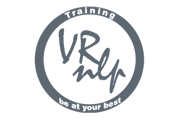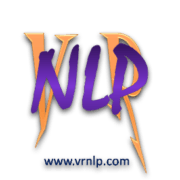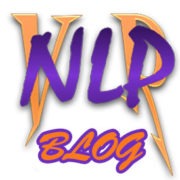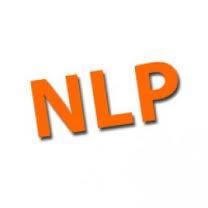The Facts on NLP
These are answers from Richard Bandler, creator of Neuro-Linguistic Programming
1. What is NLP™?
Neuro-Linguistic Programming™ is “The Study of the Structure of Subjective Experience and what can be calculated from it.”
2. What is NLP™ technology?
NLP™ is based on finding out what works and formalizing it. In order to formalize patterns I utilized everything from linguistics to holography. I didn’t just elicit peoples’ strategies since when I started out there weren’t any strategies, yet. I invented them. Strategies are a model.
A strategy is just that, a strategy. I think it is important for people to make a distinction between a model and a technique. A model (like Strategies, Submodalities, Anchoring, Transderivational Search, Chaining States, the Meta Model™, Meta Programs, Semantic Primes, Semantic Density, etc.) will allow you to create new techniques. The techniques generated from these models are techniques, nothing more.
When people discover what someone they consider to be a genius or expert does inside their head in order to perform a task exceptionally well using the models of NLP™, what they’ve discovered is not a new model. It is a strategy. The sequencing of various aspects of the models that constitute NLP™ in order to change someone’s internal representations is called a technique.
A model is a formal representation of behavior that allows prediction. Models are most commonly used in physics, e.g., in order to predict the rate of distribution of one liquid within another as well as how much movement the added liquid will have if poured from 2 inches above a beaker with a 2 inch diameter. The models that constitute NLP™ are all formal models based on mathematical, logical principles such as predicate calculus and the mathematical equations underlying holography.
Furthermore, all of these models are generative, e.g., when challenging one Meta Model™ distinction, the answer will always be a surface structure containing further Meta-Model™ distinctions. They are also recursive, i.e., the model can be applied to itself, e.g., you can use the Milton Model in order to define and utilize the distinctions described in The Hypnotic Patterns of Milton H. Erickson, M.D., Vol. 1 in order to understand how the book uses the principles described therein in order to teach them, i.e. it defines itself. These distinctions will help people understand the difference between what a model and a technique is.
3. How are the NLP™ building blocks such as calibration techniques, patterns in the language someone uses, predicates and Meta Model™, eye movements and Submodalities, other analytical models such as Logical levels, Meta-programs, perceptual positions, timeframes, etc. used to observe experts?
These tools were not developed in order to observe experts. They were discovered by observing experts. They were developed in order to further evolve human consciousness to the point that people could replicate skills and have deliberate control over their own consciousness. Nothing in NLP™ is analytical. It is all designed to be applied. If you do not know how to apply something that you learn as “NLP™” then, it is either not NLP™ or you have a bad teacher.
I think the best example of this misunderstanding is Meta-Programs. I’ve had people tell me that someone is a visual who sorts towards. That can’t be true because if you ask a person to make a picture of themselves brushing their teeth with a toothbrush they just wiped their behind with, they probably won’t move towards that. Most of you would probably say, “Yuck!” and move away from doing that. (If you behave in the previously described manner. STOP IT! It’s not a good idea.) Meta Programs describe how people sort through multiple generalizations. As such, they will tell you what lies inside and what lies outside of someone’s generalizations about things like doors.
When someone says, “Stupid door!”, that gives you a pretty good idea about what lies outside their generalizations about what doors “are”. If you then ask them how they know the door is “stupid”, they’ll give you an answer that will identify their “sorting style”, i.e., “There’s no knob,” meaning that it can only be a not-stupid-door if it has a knob. If what they want is to be able to open more kinds of doors, then you have to teach them to sort for things other than just a knob in order to identify a door. That’s how Meta-Programs work. They don’t just describe someone diagnostically. They give you something to do. NLP™ consists of models. By applying these models one can generate techniques. The models are patterns. As such, they will be true 100% of the time. That is why statistics don’t apply.
4. What can I do with NLP™?
There are many areas in which NLP™ has been utilized. Whatever your profession is, you can use NLP™ to build on whatever it is you are already doing.
5. What are typical NLP™ applications?
Collapsing Anchors, Visual Squash, 6-step Reframing, V/K dissociation, Change Personal History, Belief Change, Reimprint (all which are sometimes called NLP™), are some of the techniques that were derived from applying the models.
6. Isn’t NLP™ mainly used for therapy and that’s where the procedures came from?
I have never once called anything I do a “procedure”. I call them techniques or exercises. It’s important to emphasize that NLP™ is an educational tool, not a form of therapy. We don’t do therapy. We teach people some things about how their brains function and they use this information in order to change.
7. What are the best products and applications for business?
I have no idea what some of these products are. Once again, I think it is important for people to understand the distinction between a model and a technique. To use “products” also seems slightly misleading as I personally have used more of these simple things in business environments. I have used everything from strategies and anchoring to the Meta Model™ and Milton Model. Understanding board meetings seems to me to be the same as understanding how a family functions. I’ve done things like change where people sit at a table and change the outcome of the meeting.
8. What about enhancing creativity?
I think the more you want to become more and more creative you have to not only elicit other peoples’ (plural) strategies and replicate them yourself, but also modify others’ strategies and have a strategy that creates new creativity strategies based on as many wonderful states as you can design for yourself. Therefore, in a way, the entire field of NLP™ is a creative tool, because I wanted to create something new.
9. What about learning strategies?
Which learning strategies are useful in which contexts? What if we design new, more intense states and used those as the basis upon which we learn? All the models and techniques can be of use in many areas or professions. None of these areas are different from one another once you denominalize the words, i.e. “therapy, creativity, learning, business.”
10. What is the best progression for learning NLP™; is it to attend a Practitioner program, then a Master Practitioner , then a Trainer?
None of these are the only way to learn NLP™ nor necessarily the best for any one person. The learning strategy they engage in will determine how they learn, but as we know, those aren’t set in stone. It isn’t necessary that people go in any particular order. I know that some people make you do them in that order, but they are, as I originally designed them, different courses which cover different material and I know that learning doesn’t come in levels, because, if it did, you would all have to have my personal history up to 1975 in order to use the Meta Model™ and that just isn’t the case.
There are also introduction courses, Design Human Engineering™ courses, business and personal consulting, Personal Enhancement Courses, NLP™ as an application to Hypnosis, Sales courses, etc.
11. Can you recommend some good NLP™ books & tapes?
I recommend reading Persuasion Engineering™, The Structure of Magic Vol. I, and Vol. II, Time For A Change. Magic In Action II, Using Your Brain For A Change, Patterns of Hypnotic Techniques of Milton H. Erickson Vol I & Vol. II, as well as The Adventures of Anybody. I also recommend reading the texts listed in the bibliography of The Structure of Magic I. The tapes I recommend include Patterns of Persuasion, Design Human Engineering™, Hypnosis in Munich (unedited), Personal Enhancement Series (The Neurosonics Tapes), The BarbizonTapes, and The NeuroSynchronizer. Most of these products can be purchased through NLP™ Seminars Group International’s Book & Tape Catalog.
12. What are the roots of NLP™?
Any references to the early work can be found in the bibliography to The Structure of Magic Vol. I. These refer to some of the research that I used to develop NLP™. Reading these books with a knowledge of what NLP™ is will show that they had something but didn’t know what, yet. I took a few things from these and other places and formalized them into models which I apply. I would highly recommend reading those texts referred to the bibliography of The Structure of Magic Vol. I. Sometimes it seems that NLPers ask stupid questions and the reason why NLPer’s seem to ask stupid questions is because The Structure of Magic Vol. I is written backwards and doesn’t tell you how to use the Meta Model™ in order to go somewhere. That’s because it was a model of how therapists asked questions. Try reading chapter 4 from the last distinction to the first. That is the proper order.






